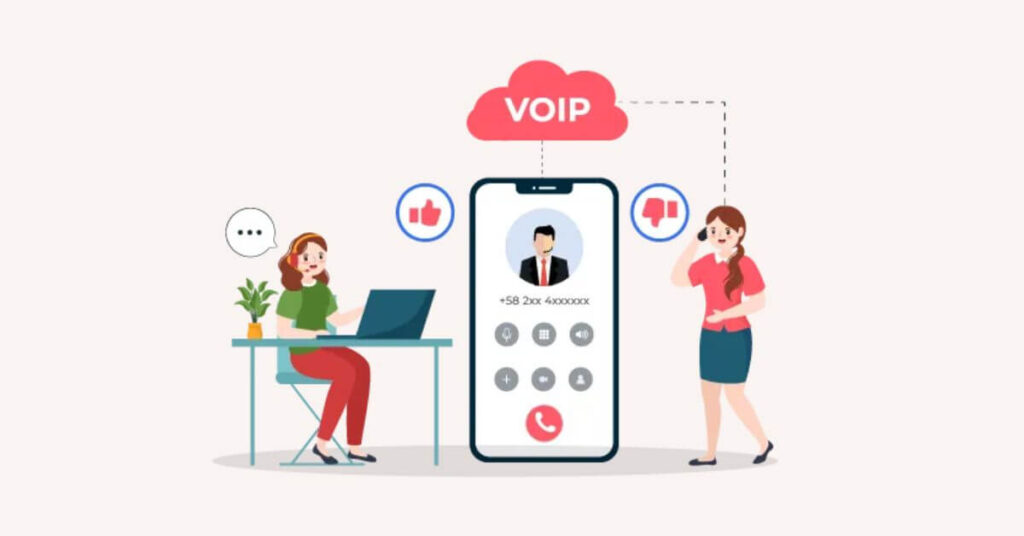Advantages and disadvantages of VoIP – VoIP is a technology that allows making calls over the Internet (LAN or WAN). To provide free calls or help keep call costs down for international outbound calls.
Advantages and disadvantages of VoIP
Advantages of VoIP
+ VoIP technology is not yet strongly developed but has been applied by many domestic and foreign enterprises. One of the most advantages that VOIP brings to businesses is free calling if using the same service, the same VOIP device or the same IP PBX (also known as on-net calling). The cost is significantly reduced compared to the traditional way of calling PSTN.
+ Simple VOIP solution for system maintenance management and cost savings. If you do not use VOIP for voice calls, you go back to using traditional voice calling, PSTN. On a PSTN line, money will be calculated over time. You will be charged for every minute that you make a call. Traditional calls are very expensive.
Since using VOIP, your call costs are paid through a monthly internet subscription through your ISP. However, you need broadband Internet access, such as ADSL, along with a stable and strong enough speed.
+ Integrate applications for voice (voice), television (video), audio (audio), data (data) and the same common infrastructure. This will help save costs when investing in many individual networks.
Scalability: PBXs are often closed systems, it is difficult to add features, devices in the internet are often capable of adding new features. Multimedia capabilities: During a call, the user can both talk and use other services such as file transfer, data sharing or viewing the image of the person talking at the other end.
+ Make calls with more than 2 people: In a normal call, only make calls between two people who can talk to each other in real time. But with VOIP, you can set up a talk or conference call between a group in real time. VOIP compresses the packet data during transmission, and that is why more data can be transmitted on one channel. As a result, multiple calls can be made at the same time on one IP Phone.
When it comes to Voip, there are many benefits and one more benefit that is, the simultaneous use of both regular desk phones and IP phones (wired or wireless) over LAN (Local Area Network) and PSTN (Public Switched Transport Network) will ensure that business communications are not interrupted when problems occur.
And can use many other services over the network such as using Fax over IP network, support auto answer, display incoming calls, display missed calls, transfer calls, display caller name, set up list of phone numbers….not inferior to PSTN’s services.
Disadvantages of VoIP
+ Besides the outstanding advantages, VOIP also has some basic disadvantages as follows: You must have a high-speed internet connection line speed to get many VOIP phone services. This is possible through a DSL (Digital subscriber line), T1, cable modem via cable TV. FiOS (Fiber Optic Service) … or some other high speed internet access method.
You must either buy or get a device called a VOIP router (VOIP adapter), it is known as an ATA (Analog Teminal Adapter) or get a VOIP card for your business system to use SIP trunks.
+ 911 emergency services are not available. In the event of an emergency, if you are unable to specify, the operator will not be able to determine your location.
Service quality is not high: Data networks are inherently not built for the purpose of real-time voice transmission, so when transmitting voice over data networks, call quality cannot be guaranteed in the event that the network occurs. congestion or high latency. Real-time voice signal requires high quality and stable data transmission.
+ Another factor that reduces voice quality is compression technique to save transmission lines. If you should lower the capacity, the more complicated the compression technique will be, the quality is not high and especially the processing time will be long, causing delay.
Echo problem: If in the voice network, the delay is low, so the echo does not affect much, in the IP network, due to the large delay, the echo affects the voice quality.
+ Technical complexity: Real-time signal transmission in packet-switched networks is very difficult to implement because packet loss in the network is unavoidable and the delay is not fixed for both information packets when transmitting on the network.
In order to achieve an acceptable voice service, a signal compression technique that meets strict requirements is required: a large compression ratio (to reduce the bit rate), the ability to predict and reproduce the information of the calls is lost…
The processing speed of the Codecs (Coder and decoder) must be fast enough to not interrupt the conversation. At the same time, the network’s infrastructure also needs to be upgraded to new technologies such as Frame-Relay, MPLS, etc. to have higher speed or to have a QoS (Quality of Service) implementation mechanism.

